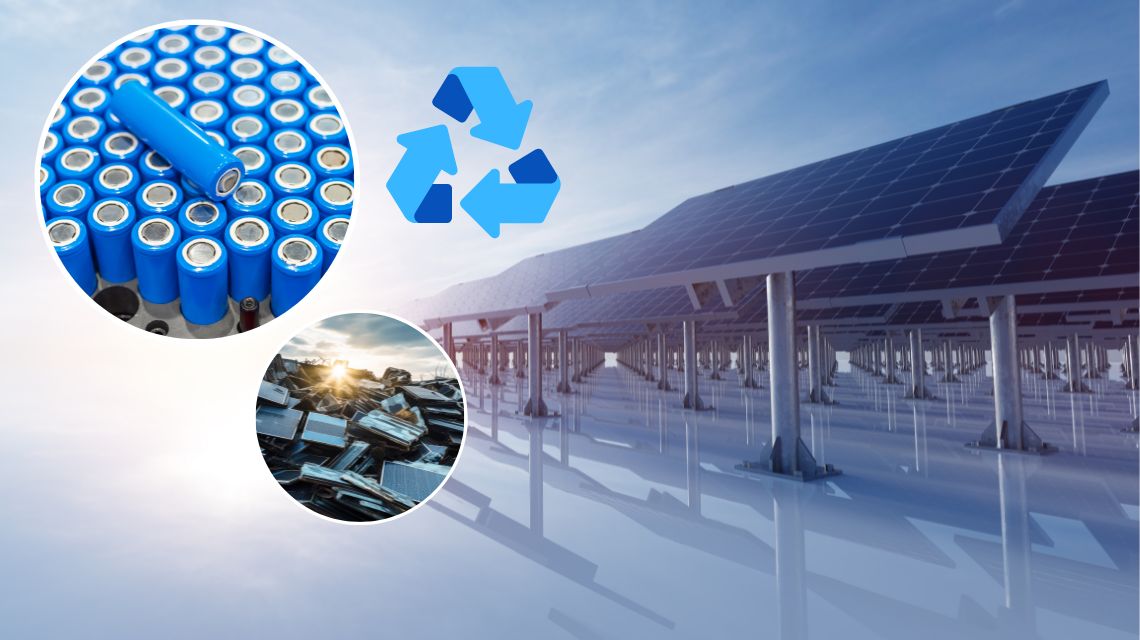Italian National Agency for New Technologies, Energy and Sustainable Economic Development

Environment: Silicon recovered from discarded photovoltaic modules makes new battery material
From waste to resource. ENEA has patented a reduced environmental impact process to recover silicon from end-of-life photovoltaic panels and convert it into an innovative nano material used to build less expensive batteries with improved performance and extended lifespan. The patent is also useful in photovoltaic panels recycling plants and in photovoltaic panel manufacturing plants, for example to recover silicon from faulty panels.
The process developed by ENEA reduces the silicon powder in nanometric particles useful for application in lithium batteries and at the same time eliminates the oxidized silicon particles wich decrease electrical conductivity. The silicon obtained, characterized with different diagnostic techniques and mixed with other materials, is then used to create a new type of anode for high energy density lithium batteries.
The significance of this patent lies in the use of silicon as the reference semiconductor material for the production of photovoltaic panels, because it allows solar energy to be converted into electrical energy with the highest efficiency and reliability. Due to its multiple applications in the energy, electronics and metallurgy sectors, up to high-tech components, silicon is among the most strategic materials in the world and, despite being extremely abundant in the Earth's crust, making silicon from silicon oxide It is highly energy-intensive and has a large environmental impact.
“Currently the recycling rate for silicon in Europe is zero, therefore being able to recover it from end-of-life photovoltaic panels and re-introduce it into different supply chains, thanks to recovery technologies with low environmental impact, provides a sustainable way to supply this precious material", pointed out Maria Lucia Protopapa at the Laboratory of Functional Materials and Technologies for Sustainable Applications of the ENEA Research Center in Brindisi. “We will be able to develop materials alternative to graphite, also a critical material, currently used in commercial batteries, to respond to the growing demand for batteries with increasingly high energy density”.
At an operational level, after removing the aluminum frame, the panel protection glass, the cables and the junction box, we perform a pre-treatment process which consists in grinding the photovoltaic panels. Three different fractions of materials are obtained: glassy fragments, agglomerates of EVA[1] (a vinyl plastic material) and a composition of silicon flakes and polymeric layers, the so-called "solar chips", from which silicon is extracted through pyrolysis. Electrochemical tests have shown that the silicon obtained with this process is capable of forming alloys with lithium, therefore it can be used to make high-capacity anodes for batteries with better performance than commercial ones made of graphite.
The photovoltaic power installed in the world has increased exponentially since 1990 and at the end of 2022 it reached 1047 GW (Irena, 2023), with a rising trend of 18,200 GW by 2050. Since the lifespan of a photovoltaic panel is approximately 25-30 years, in 2050 the upcoming PV waste is projected to be approximately 60-78 million tons globally.
The authors of the ENEA patent are Maria Lucia Protopapa, Michele Penza, Emiliano Burresi, Daniela Carbone, Martino Palmisano, Emanuela Pesce, Giovanni Battista Appetecchi, Selene Grilli, Elena Salernitano, Dario Della Sala.
How is a silicon-based photovoltaic panel made?
The photovoltaic panel is made up of a silicon photovoltaic cell encapsulated between two layers of glue (EVA) which make the cell adhere above to the glass and below to a plastic sheet called backsheet. Both the glass and the backsheet provide protection against environmental factors such as rain, wind, hail and dust. This plywood is then enclosed in an aluminum frame. Disused photovoltaic panels are a mine of useful and precious materials (silicon, silver, copper, aluminium). Some of them, like silicon, are classified by the European Union as strategic materials, i.e. materials suitable for use in very sophisticated technologies, difficult to replace, in areas with high strategic importance LIKE renewable energy, digital, aerospace and defense technologies, but are at risk from future supply disruptions, with global supply and demand imbalances.
